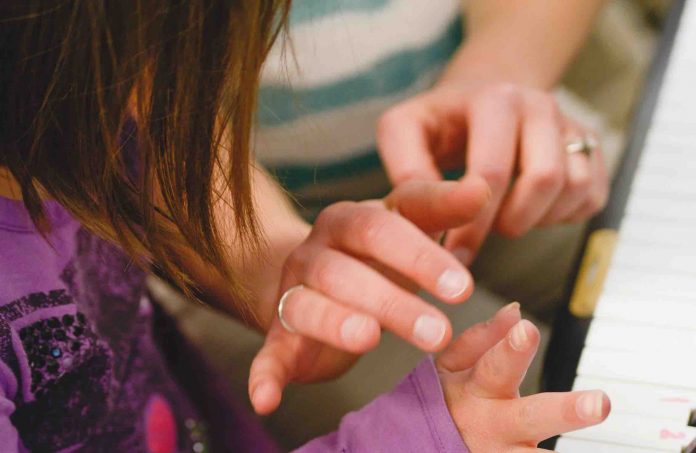For many of us, music is an integral part of our lives: It lulls our babies to sleep, it makes our car rides tolerable, it makes us feel better after a bad day and it is often a big part of major events like weddings. But music, specifically music therapy (a process in which a music therapist uses music and all of its facets—physical, emotional, mental, social, aesthetic, spiritual—to help clients improve their health) has many more benefits; especially for children with developmental and/or learning differences like Autism.
According to Suzanne Hanser, Ed.D., chair at Berklee’s Music Therapy Department, there is scientific evidence that music therapy has positively influenced children on the Autism spectrum in many ways; It enhances skills in communication, interpersonal relationships, self-regulation, coping strategies, stress management and focusing attention. The American Music Therapy Association, believes that Music Therapy enhances one’s quality of life, involving relationships between a qualified music therapist and individual; between one individual and another; between the individual and his/her family; and between the music and the participants. These relationships are structured and adapted through the elements of music to create a positive environment and set the occasion for successful growth. In addition, Music therapy interventions can:
– Promote Wellness
– Manage Stress
– Alleviate Pain
– Express Feelings
– Enhance Memory
– Improve Communication
– Promote Physical Rehabilitation
Music therapy pioneers, Nordoff and Robbins, describe their success in working with several young people diagnosed with Autism. The achievements include: increased two-way communication, increased attention, increased compliance with following complex directions, decrease in sensory-seeking behaviors (pinching, biting, putting objects in mouth and climbing on the furniture), increased use of language, displaying more advanced instrument play, a progressed ability to play instruments (specifically piano and drums) and using color/letter coding as well as playing with both hands/feet. These Music therapies were often utilized along with other models, and were often combined with such therapy treatment approaches as Applied Behavior Analysis (ABA) and DIR/Floortime.
Literature reports that most individuals with ASD respond positively to music. The frequency with which people with ASD show a heightened interest and response to music makes it an excellent therapeutic tool for working with them. Because music is processed in both hemispheres of the brain, it can stimulate cognitive functioning and may be used for remediation of some speech/language skills. Children diagnosed with Autism spectrum disorders are often overwhelmed by sensory input, so it makes perfect sense that music would help them to organize their experience and engage with the world around them.
A very successful collaborative program was created in 2011 among the American Music Therapy Association (AMTA), Berklee College of Music’s Music Therapy Program, and Autism Speaks in the Boston area, “Autism Speaks and Sings,” “Autism Speaks and Sings” not only interactively engaged both children and their families, but also raised awareness about the future possibilities of alternative therapies available for children with ASD. Autism Speaks and Sings! is designed to offer families and professionals a glimpse of some creative techniques and expected outcomes of music therapy interventions.”















